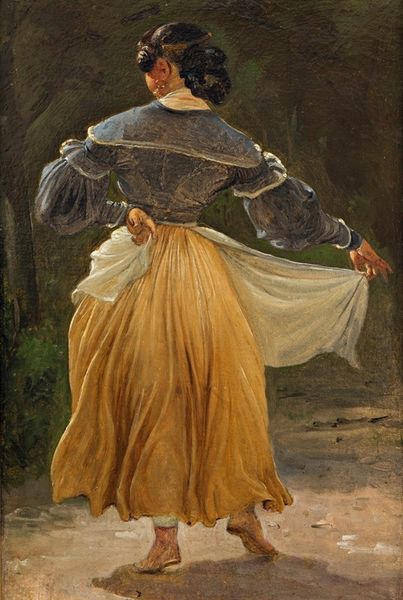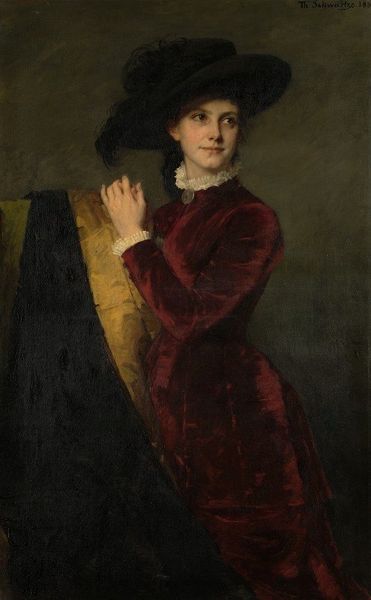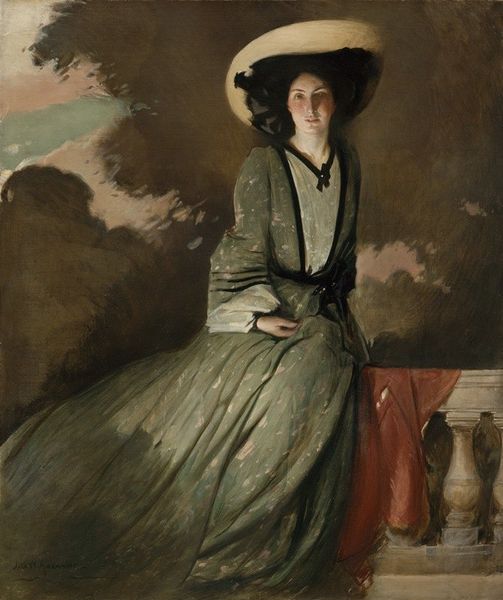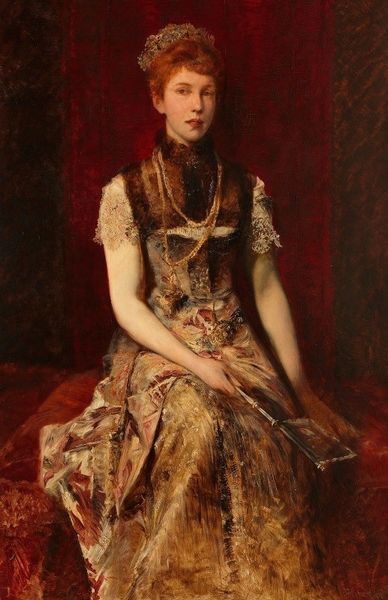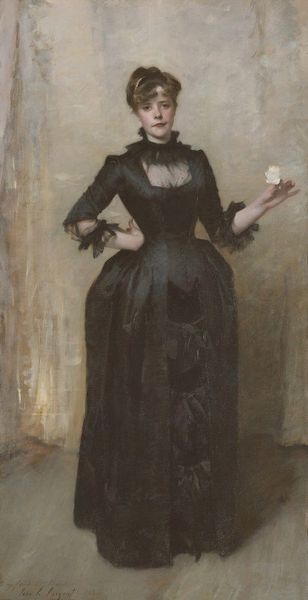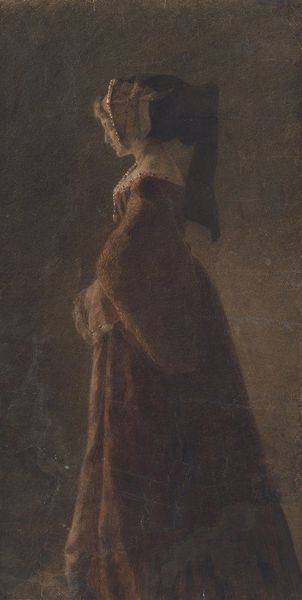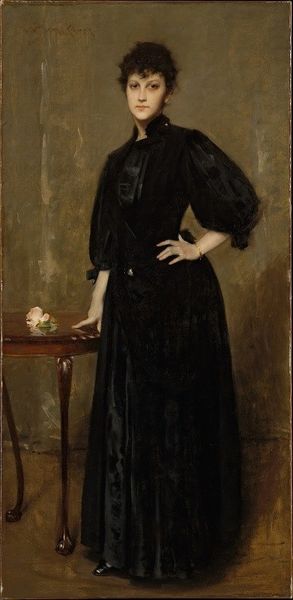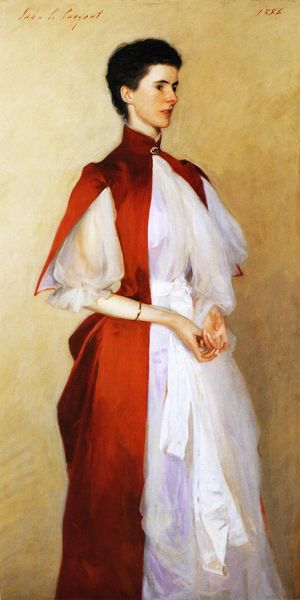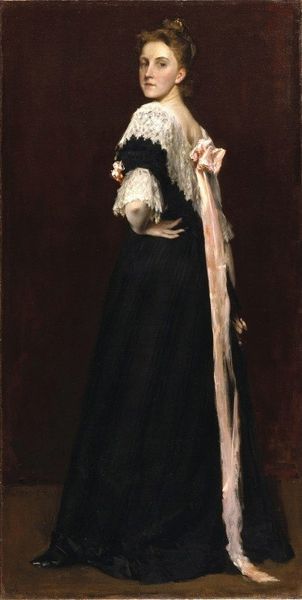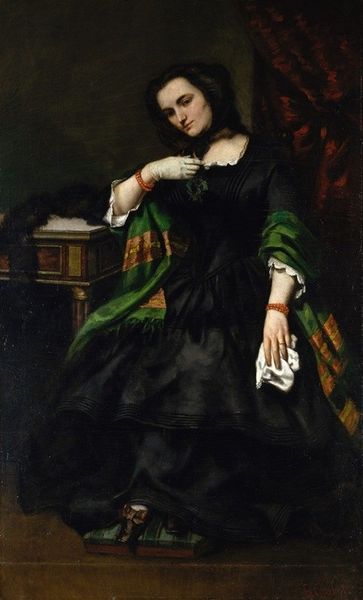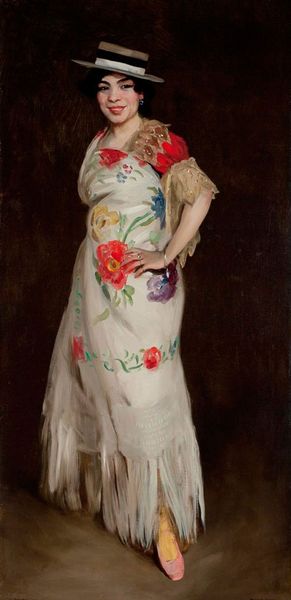
Copyright: Public Domain: Artvee
Curator: Here we have Alfred Stevens’ "Elegant at Billiards," painted in 1906. A striking depiction of a woman poised at a billiard table. What's your immediate take? Editor: The red backdrop pops. I'm struck by how poised she seems. It's like she's holding all the power, but in such a contained way. Curator: That resonates with Stevens’ position in the art world then. He moved within circles keen to portray bourgeois leisure. The figure presents an ideal. Billiards halls were, at that time, shifting and evolving socially, becoming more accessible. Editor: Right, I'm curious about that "ideal." Is this a representation of expanding roles for women? Was the artist using a setting of leisure to actually speak about a changing role for women and gender in the era? I wonder about what access might look like, really, across different identity categories? Curator: That's where it gets tricky. Stevens’ female figures, though active, often exist within spaces dictated by masculine society, such as game halls and gambling halls. The framing may reinforce, rather than dismantle, existing power dynamics. Editor: So, are you implying a commentary on societal restraints imposed upon women, even within ostensibly liberating scenarios? I see it mirrored in her elaborate attire; beauty and adornment alongside precision. Curator: Indeed, there’s a push and pull. Stevens creates beautiful surfaces that charm audiences and gain their entrance, as if he is working at a game table, but perhaps he’s doing that work of beauty in service of a larger societal question about public roles and private ones. And let us consider his social class: As a product of an elite family that produced painters and art dealers, his choices would reflect the context of wealth, luxury and connections. Editor: I hadn’t considered her outfit as a constraint before. I'd seen it as an embellishment of her station, not its restriction. Considering this context and that setting, this is starting to feel more ambivalent and uneasy than ‘charming.’ Thank you. Curator: Seeing beyond the surface is where the intrigue lies! I'm reminded of the institutional critique so many later artists pursued, not just as an aesthetic stance, but often as a genuine desire to democratize art. Editor: Thanks. I am definitely seeing and questioning it more fully now.
Comments
No comments
Be the first to comment and join the conversation on the ultimate creative platform.

